
Chinese mythology is mythology that has been passed down in oral form or recorded in literature throughout the area now known as Greater China. Chinese mythology encompasses a diverse array of myths derived from regional and cultural traditions. Populated with engaging narratives featuring extraordinary individuals and beings endowed with magical powers, these stories often unfold in fantastical mythological realms or historical epochs. Similar to numerous other mythologies, Chinese mythology has historically been regarded, at least partially, as a factual record of the past.
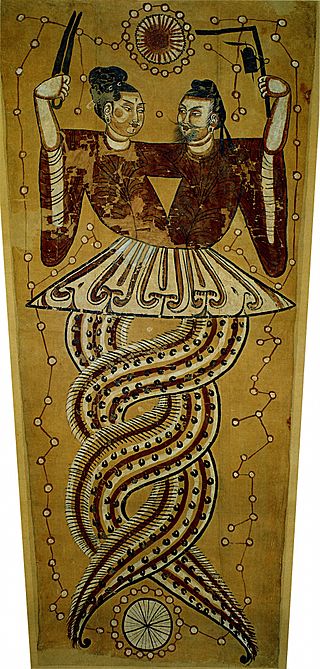
Fuxi or Fu Hsi (伏羲) is a culture hero in Chinese mythology, credited along with his sister and wife Nüwa with creating humanity and the invention of music, hunting, fishing, domestication, and cooking, as well as the Cangjie system of writing Chinese characters around 2900 BC or 2000 BC. Fuxi was counted as the first mythical emperor of China, "a divine being with a serpent's body" who was miraculously born, a Taoist deity, and/or a member of the Three Sovereigns at the beginning of the Chinese dynastic period.
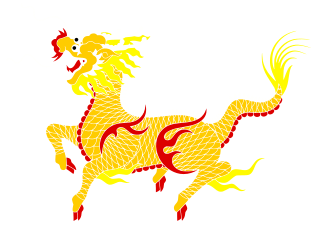
The qilin is a legendary hooved chimerical creature that appears in Chinese mythology, and is said to appear with the imminent arrival or passing of a sage or illustrious ruler. Qilin are a specific type of the lin mythological family of one-horned beasts. The qilin also appears in the mythologies of other Chinese-influenced cultures.

In the myths and folk religion of Chinese culture, the Jade Emperor or Yudi is one of the representations of the primordial god.

Nüwa, also read Nügua, is a mother goddess, culture hero, and/or member of the Three Sovereigns of Chinese mythology. She is a goddess in Chinese folk religion, Chinese Buddhism, Confucianism and Taoism. She is credited with creating humanity and repairing the Pillar of Heaven.

Chiyou is a mythological being that appears in Chinese mythology. He was a tribal leader of the Nine Li tribe in ancient China. He is best known as a king who lost against the future Yellow Emperor during the Three Sovereigns and Five Emperors era in Chinese mythology. According to the Song dynasty history book Lushi, Chiyou's surname was Jiang (姜), and he was a descendant of the Flame Emperor.

Yinglong is a winged dragon and rain deity in ancient Chinese mythology.
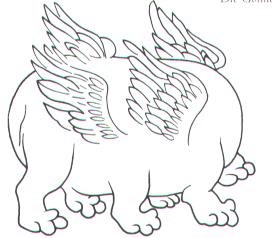
Hundun is both a "legendary faceless being" in Chinese mythology and the "primordial and central chaos" in Chinese cosmogony, comparable with the world egg.
Chinese creation myths are symbolic narratives about the origins of the universe, earth, and life. Myths in China vary from culture to culture. In Chinese mythology, the term "cosmogonic myth" or "origin myth" is more accurate than "creation myth", since very few stories involve a creator deity or divine will. Chinese creation myths fundamentally differ from monotheistic traditions with one authorized version, such as the Judeo-Christian Genesis creation narrative: Chinese classics record numerous and contradictory origin myths. Traditionally, the world was created on Chinese New Year and the animals, people, and many deities were created during its 15 days.
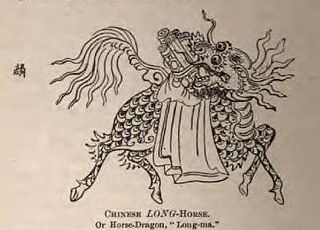
The longma is a fabled winged horse with dragon scales in Chinese mythology. Seeing a longma was an omen of a legendary sage-ruler, particularly one of the Three Sovereigns and Five Emperors.

Hòutǔ or Hòutǔshén, also known as Hòutǔ Niángniáng, otherwise called Dimǔ or Dimǔ Niángniáng, is the deity of all land and earth in Chinese religion and mythology. Houtu is the overlord of all the Tudigongs, Sheji, Shan Shen, City Gods, and landlord gods worldwide.
The Great Flood of Gun-Yu, also known as the Gun-Yu myth, was a major flood in ancient China that allegedly continued for at least two generations, which resulted in great population displacements among other disasters, such as storms and famine. People left their homes to live on the high hills and mountains, or nest on the trees. According to mythological and historical sources, it is traditionally dated to the third millennium BCE, or about 2300–2200 BCE, during the reign of Emperor Yao.
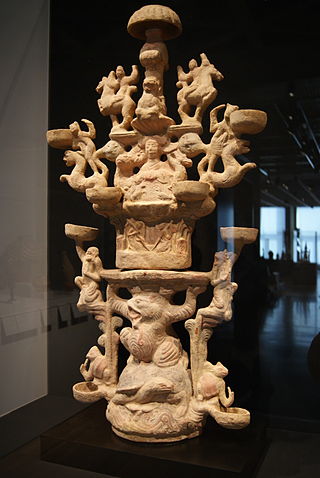
The Kunlun or Kunlun Shan is a mountain or mountain range in Chinese mythology, an important symbol representing the axis mundi and divinity.

Snakes are an important motif in Chinese mythology. There are various myths, legends, and folk tales about snakes. Chinese mythology refers to these and other myths found in the historical geographic area(s) of China. These myths include Chinese and other languages, as transmitted by Han Chinese as well as other ethnic groups.
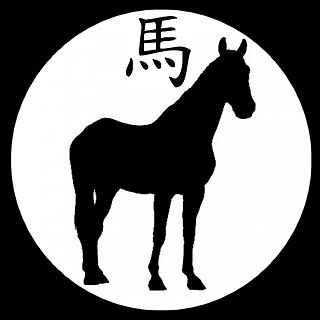
Horses are an important motif in Chinese mythology. There are many myths about horses or horse-like beings, including the pony. Chinese mythology refers to those myths found in the historical geographic area of China. This includes myths in Chinese and other languages, as transmitted by Han Chinese as well as other ethnic groups. There are various motifs of horses in Chinese mythology. In some cases the focus is on a horse or horses as the protagonist of the action, in other cases they appear in a supporting role, sometimes as the locomotive power propelling a chariot and its occupant(s). According to a cyclical Chinese calendar system, the time period of 31 January 2014 - 18 February 2015 falls under the category of the (yang) Wood Horse.

The Yellow River Map, Scheme, or Diagram, also known by its Chinese name as the Hetu, is an ancient Chinese diagram that appears in myths concerning the invention of writing by Cangjie and other culture heroes. It is usually paired with the Luoshu Square—named in reference to the Yellow River's Luo tributary—and used with the Luoshu in various contexts involving Chinese geomancy, numerology, philosophy, and early natural science.
The Flood Mythology of China, or Great Flood of China is a deluge theme which happened in China. Derk Bodde (1961) stated that "from all mythological themes in ancient Chinese, the earliest and so far most pervasive is about flood." The mythology also has shared characteristics with other Great Floods all over the world, although it also has unique characteristics or different focuses. Lu Yilu (2002) groups all versions of great flood into three themes: "the heroes controls the flood; "brother-sister marriage to repopulating the world"; and "the flood which is drowning the whole city along with its citizens".

Chinese gods and immortals are beings in various Chinese religions seen in a variety of ways and mythological contexts.

The Wǔfāng Shàngdì, or simply Wǔdì or Wǔshén are, in Chinese canonical texts and common Chinese religion, the fivefold manifestation of the supreme God of Heaven. This theology dates back at least to the Shang dynasty. Described as the "five changeable faces of Heaven", they represent Heaven's cosmic activity which shapes worlds as tán 壇, "altars", imitating its order which is visible in the starry vault, the north celestial pole and its spinning constellations. The Five Deities themselves represent these constellations. In accordance with the Three Powers they have a celestial, a terrestrial and a chthonic form. The Han Chinese identify themselves as the descendants of the Red and Yellow Deities.















